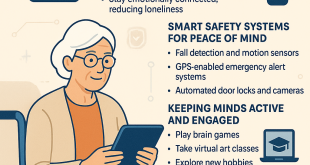Starting an automobile can turn even the mildest mannered people among us into seething volcanoes of raging fury. Aggression, bordering on that of an NFL linebacker, comes to the fore and suddenly their vicious, evil, angry twin is in control.
Calling this situation dangerous is to engage in the most fundamental form of understatement. To help prevent it, let’s take a look at how to quell road rage.

What Is Road Rage?
As defined by the Merriam-Webster dictionary, the term is a noun, referring to a motorist exhibiting uncontrolled anger. This emotion is usually triggered by the perception of an irritating act committed by another driver and is typically expressed in aggressive, offensive or violent behavior.
The AAA Foundation for Traffic Safety has observed young, poorly educated males who are between the ages of 16 and 26 most often display the condition. However, it is entirely possible for these behaviors to manifest in anyone—at any age—regardless of their gender, income, or level of education.
Contributing Factors
Anything perceived by a driver to impede their progress can elicit a road rage response. These include traffic signals, congestion and a dearth of parking spaces. Remarkably, even being kept waiting when picking someone up can ignite these emotions. Running late to work, a meeting or an event can also fund road rage.
However, a number of contributing factors have nothing to do with driving at all. These can include experiencing emotionally charged situations such as money problems, arguing just before driving or breaking up with a mate. The thing is, you never know what is going on in another person’s life. When you run across someone who is obviously angry, it’s best to afford them a wide berth.
By the way, if money problems are an issue and you need to get a new car, companies like RoadLoans can get you a poor credit car loan—so that’s one less thing about which you need to worry.
Avoiding Being “That Person”
Recognizing the contributing factors can go a long way toward helping you quell your road rage. If you know you’re irritated when you get in a car, do everything you can to chill before driving.
Find some relaxing music you like, roll down your window (in good weather) and let the sun shine on your face. Take a few deep breaths and exhale slowly. Give yourself more than enough time to get to your destinations so you can avoid becoming anxious about being late.
Give other people the benefit of the doubt. They could be lost If they’re driving slowly. If they turn out in front of you, they could have simply misjudged the speed at which you were approaching. When you know you’re irritated, remind yourself of that fact and make a conscious effort to keep it out of your driving.
Avoiding Inciting Others
Even when you’re having a wonderful day, you could inadvertently set someone else off. Always keep up with the flow of traffic. Move into the farthest lane to the right if others are driving faster than you are comfortable.
If another driver is right on your bumper, move over to the right and let them pass. If you’re on a two-lane road, pull over so they can go by. It isn’t going to slow you down, nor is it your responsibility to regulate the speed of other drivers—unless you’re an on-duty police officer.
Leave enough space between you and the car you’re following to enable other drivers to merge in and out of your lane without slowing everything down. If someone needs to get into a lane ahead of you, go ahead and let them do it.
Again, you have no way of knowing what’s going on in the cars around you. It’s better to drive with the assumption they’re doing what they need to be doing rather than taking every incident as a personal attack. With that in mind, resist the impulse to make rude gestures or get back at them when something irritates you.
Road rage situations can escalate out of hand far to easily. Fatalities have occurred as a result. Think about it; regardless of how angry you might feel after someone cuts you off in traffic—is it really worth dying over?
 World inside pictures Collect and share the best ideas that make our life easier
World inside pictures Collect and share the best ideas that make our life easier








